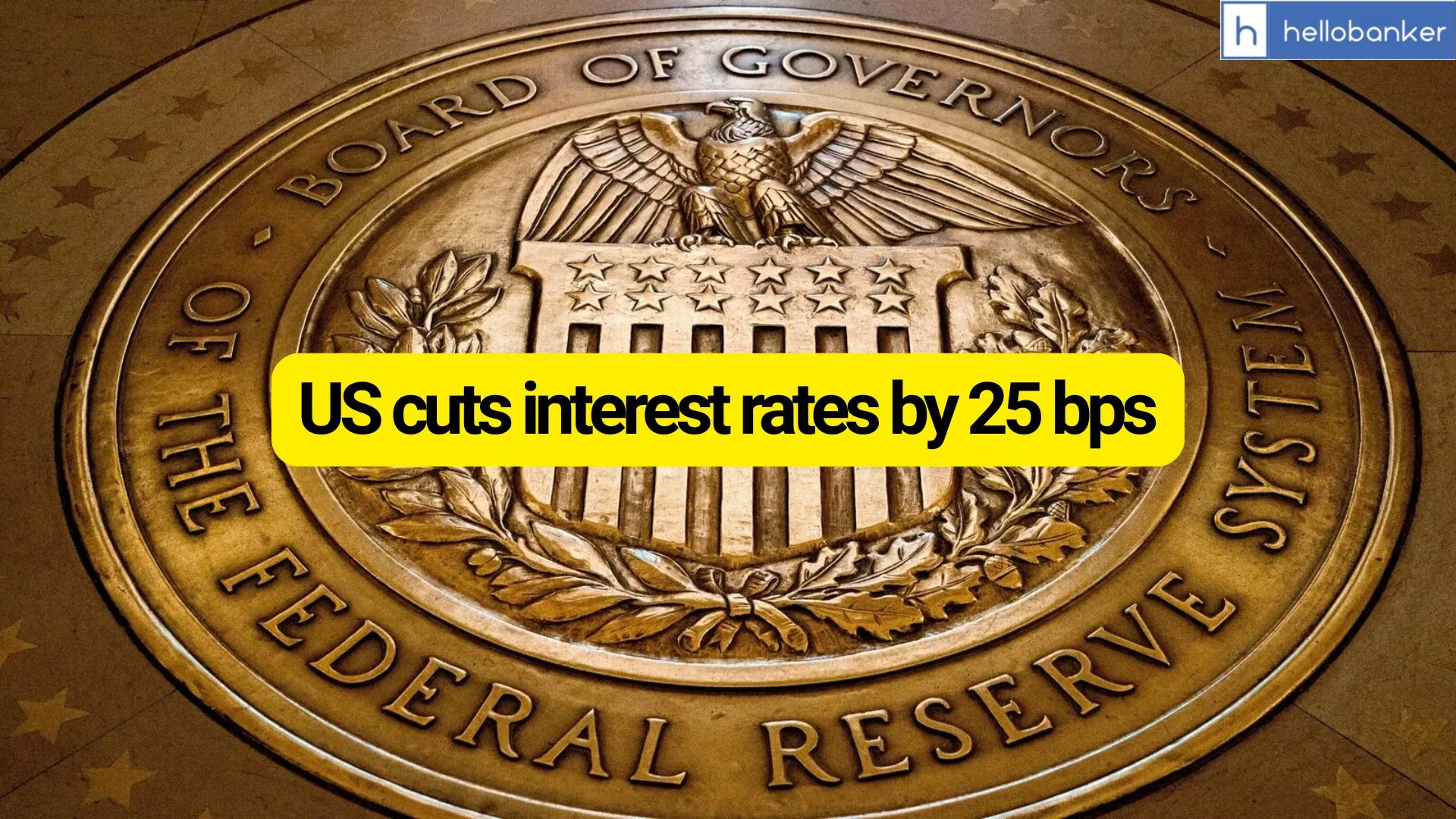US cuts interest rates by 25 bps, Check new interest rate of Loans in United States

| Get instant news updates: Click here to join our Whatsapp Group |
US cuts interest rates by 25 bps: The US Federal Reserve has decided to cut the key benchmark interest rates by 25 basis points (bps) to the range of 3.75% to 4.00%. US policymakers voted the same with 10-2 in favor of lowering the bank’s key lending rate. Two voting members opposed the Fed’s decision to cut the interest rates by 25 bps. One of them was Stephen Miran, who is on leave from his post of leading US President Donald Trump’s Council of Economic Advisers, voted for a larger 0.5 percentage point cut. The second one amongst them, Jeffrey Schmid, president of the Federal Reserve Bank of Kansas City, had voted to hold rates steady.
The Federal Reserve has made the following decisions to implement the monetary policy stance announced by the Federal Open Market Committee in its statement on October 29, 2025:
- The Board of Governors of the Federal Reserve System voted unanimously to lower the interest rate paid on reserve balances to 3.90 percent, effective October 30, 2025.
- As part of its policy decision, the Federal Open Market Committee voted to direct the Open Market Desk at the Federal Reserve Bank of New York, until instructed otherwise, to execute transactions in the System Open Market Account in accordance with the following domestic policy directive:
Effective October 30, 2025, the Federal Open Market Committee directs the Desk to:- Undertake open market operations as necessary to maintain the federal funds rate in a target range of 3-3/4 to 4 percent.
- Conduct standing overnight repurchase agreement operations with a minimum bid rate of 4.0 percent and with an aggregate operation limit of $500 billion.
- Conduct standing overnight reverse repurchase agreement operations at an offering rate of 3.75 percent and with a per-counterparty limit of $160 billion per day.
- Roll over at auction the amount of principal payments from the Federal Reserve’s holdings of Treasury securities maturing in October and November that exceeds a cap of $5 billion per month. Redeem Treasury coupon securities up to this monthly cap and Treasury bills to the extent that coupon principal payments are less than the monthly cap. Beginning on December 1, roll over at auction all principal payments from the Federal Reserve’s holdings of Treasury securities.
- Reinvest the amount of principal payments from the Federal Reserve’s holdings of agency debt and agency mortgage-backed securities (MBS) received in October and November that exceeds a cap of $35 billion per month into Treasury securities to roughly match the maturity composition of Treasury securities outstanding. Beginning on December 1, reinvest all principal payments from the Federal Reserve’s holdings of agency securities into Treasury bills.
- Allow modest deviations from stated amounts for reinvestments, if needed for operational reasons.”
Download Statement PDF (This PDF is available for Premium Users Only. Click here to join premium)
Policy Statement
In its policy statement, the committee said, “Available indicators suggest that economic activity has been expanding at a moderate pace. Job gains have slowed this year, and the unemployment rate has edged up but remained low through August; more recent indicators are consistent with these developments. Inflation has moved up since earlier in the year and remains somewhat elevated.”
In support of its goals and in light of the shift in the balance of risks, the Committee decided to lower the target range for the federal funds rate by 1/4 percentage point to 3-3/4 to 4 percent. In considering additional adjustments to the target range for the federal funds rate, the Committee will carefully assess incoming data, the evolving outlook, and the balance of risks. The Committee decided to conclude the reduction of its aggregate securities holdings on December 1. The Committee is strongly committed to supporting maximum employment and returning inflation to its 2 percent objective.
Fed Chair Jerome Powell, in his post-meeting remarks, described the labour market as “less dynamic and somewhat softer” than earlier in the year, attributing part of the slowdown to reduced immigration. However, he maintained that weakness in hiring does not appear to be accelerating.
This marks the lowest rate level in three years, continuing the Fed’s easing cycle that began in September after a nine-month pause. The move reflects growing concerns over softening job growth and lingering trade disruptions, as policymakers prioritise employment stability while inflation remains above the 2% target.
Why is this important?
The US central bank’s move to cut the interest rates for the second time comes amid elevated levels of inflation in the country and a full-scale US government shutdown, resulting in the lack of economic data for the Fed to analyse. The Fed last month had cut interest rates for the first time since last December.
Alongside the rate cut, the Fed announced an end to its quantitative tightening (QT) program, the gradual reduction of its asset holdings, effective December 1. The balance sheet had ballooned during the early pandemic years and has since been shrinking.
The FOMC did not provide explicit forward guidance for its next policy decision. The next Fed meeting is scheduled for December 9–10, where markets will look for cues on whether another cut is on the table. In its September ‘dot plot,’ Fed officials had indicated the possibility of two more cuts in 2025, signalling a shift toward a more accommodative stance amid an uncertain economic outlook.
Inflation
Consumer Price Index (CPI) inflation in the US currently stands at 3%, cooler than most analysts had expected but still above the Fed’s 2% target. The Committee seeks to achieve maximum employment and inflation at the rate of 2 percent over the longer run. The Fed had previously cut borrowing costs three times in 2024 before pausing to assess the economic impact of President Donald Trump’s tariffs. Rates had remained unchanged at 4.25%-4.50% for five consecutive meetings until July 2025.
Download Statement PDF (This PDF is available for Premium Users Only. Click here to join premium)
